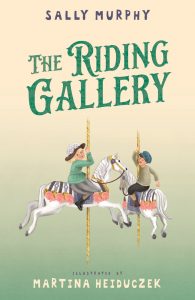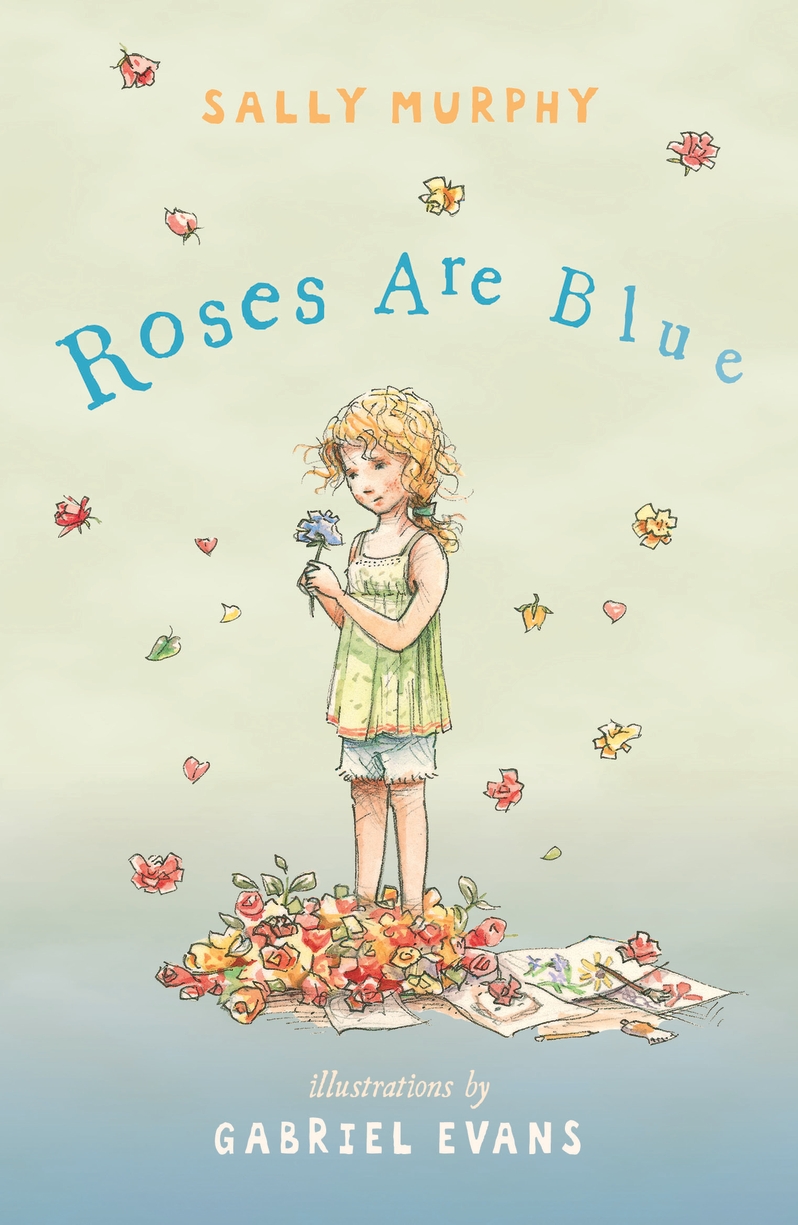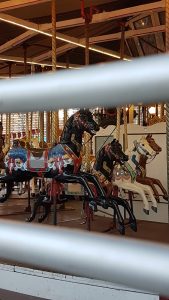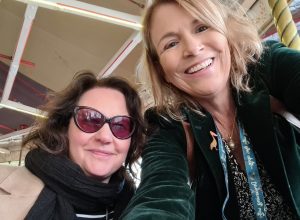Tadaaaaa!

Here it is: The Riding Gallery, written by me, illustrated by Martina Heiduczek and published by Walker Books – and it’s out today!
Ever since I read a tiny mention of Anton Weniger, and the troubles he faced during World War 1, I have wanted to share his story with the world. Anton was a showman – he travelled rural Victoria with his rides and amusements and, every summer, was stationed in St Kilda, where children – and adults – came to rid and play near the sea.
But Anton had a German name, and a German accent, and was, in fact, a German immigrant. And, at the same time as his new, beautiful, spectacular riding gallery (you might also call it a merry-go-round) was opened, the world was at war – and Australia was at war with Germany. This meant that, while people loved the new ride, many did not love, or even trust, Anton.
While the ride remained in St Kilda for many years, Anton did not, and that makes me sad for a man who wanted to bring joy tot he world through a children’s ride. He didn’t get to witness all the joy it brings, and nor could he have foreseen that, 110 years later, that ride is still turning, in Canberra, our nation’s capital.
The Riding Gallery is my attempt to share Anton’s story with the world. While it is a story of prejudice and bigotry and the hardships of World War 1, I also think that it also offers hope.
Welcome to the world, The Riding Gallery – and thank you, Anton Weniger, for building a ride that continues to make people smile. Now available in all good bookshops – or ask them to get it in for you.


